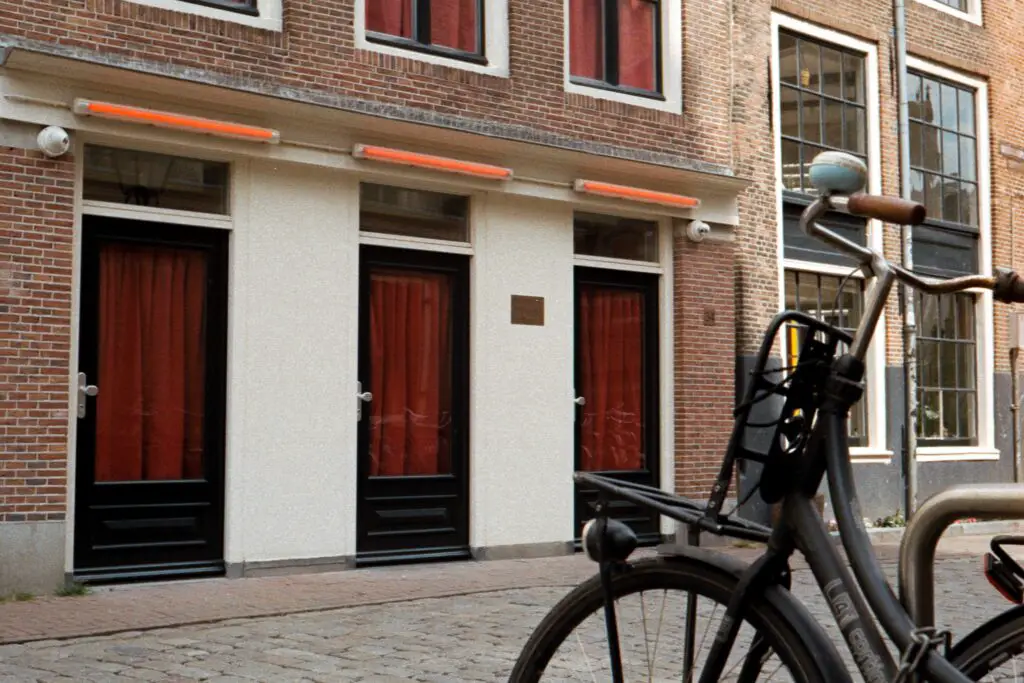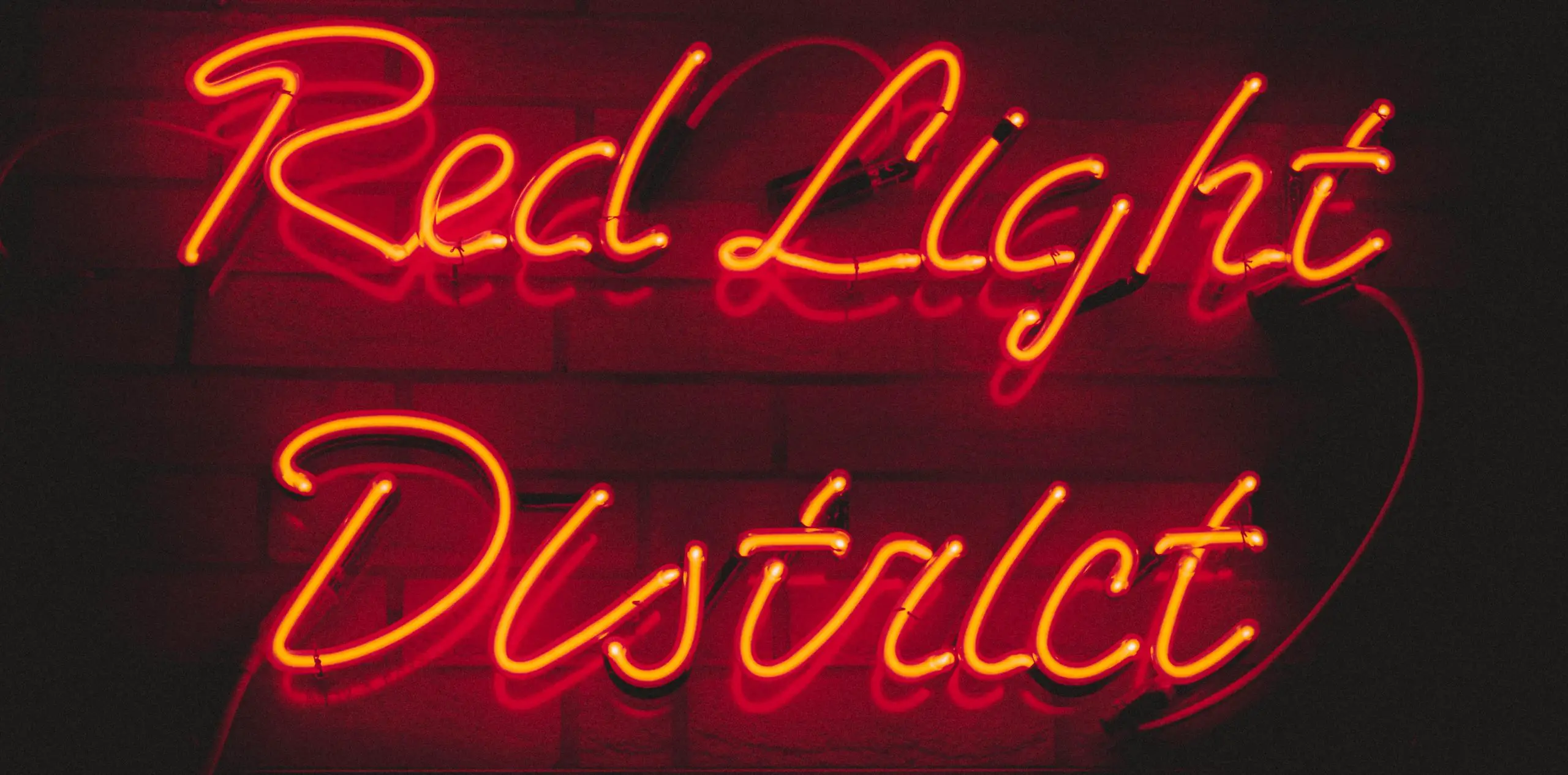Table of Contents
Cheap Hotels, Museums, Sex Clubs, and Culture in the Rosse Buurt
Amsterdam’s Red Light District, or Rosse Buurt, dates back to the middle ages. But these days, sex workers are lit by red neon lights as they wait in windows for customers. There are actually several Red Light Districts in Amsterdam, interspersed among some of the city’s most important cultural sites.
The Different Red Light Districts of Amsterdam
The most famous of Amsterdam’s Red Light Districts is De Wallen, a warren of streets roughly south of the Oosterdok and Centraal Station. De Wallen grew to service sailors at the height of the Netherlands’ sea power in the seventeenth century.
While there are plenty of sex shops and prostitutes in De Wallen, it is also quite popular with curious tourists. Some tour groups even go through the area, though only during the day, when the area is more mixed-use.
There are other, less well-known, Red Light Districts in Amsterdam. One is Singelgebied, located along the Singel canal just west of The Dam. Singelgebied was the location of one of Amsterdam’s most notorious brothels, Yab-Yum, until it was shut down by authorities in 2008.
Another Red Light District is along Ruysdaelkade. It’s located roughly two kilometers south of De Wallen and Oudekirksplein, and just east of Museumplein, which features the Rijksmuseum, Van Gogh Museum, and the Concertgebouw. This Red Light District is patronized mostly by locals, who cruise along in their cars.
Hotels Near Amsterdam’s Red Light District

There are plenty of hotels in and around the Red Light District, ranging from the ritzy to the sleazy – or to the wacky. The Amstel Botel, for example, the city’s only floating hotel, is located a short stroll from Centraal Station, just north of De Wallen. But most hotels in Amsterdam’s historic center are within walking distance of the Rosse Buurt.
Whether finding accommodations in the Red Light District, or just passing through, tourists should be aware of the unwritten rule that picture-taking is forbidden in the Rosse Buurt. Those who try will risk having their cameras taken from them and broken. Even gawking isn’t much appreciated by the area’s sex workers, so the curious need to be circumspect.
Discretion has the added value of keeping tourists from becoming the obvious targets of petty criminals. Pickpockets and drug dealers roam the Red Light District, especially at night.
Attractions in and Around Amsterdam’s Red Light District
Aside from scantily-clad women, there are many things to see in Amsterdam’s Red Light District, some in keeping with the area’s risqué reputation. The Hash, Marihuana & Hemp Museum (located at Oudezijds Achterburgwal 148) and the Sex Museum (at Damrak 18) are two prominent examples.
The Oude Kerk (Old Church) is a 13th-century Gothic church, which is now right in the middle of the Red Light District – many prostitutes’ rooms around Oudekerksplein were once almshouses. It’s notable for its stained glass windows, 18th-century organ, and tombs, including that of Rembrandt’s wife, Saskia van Uylenburg.
Amsterdam’s Red Light District is a unique and complex place. Since the Rosse Buurt hasn’t been kept separate from the rest of the city, and has moved around over time, there is a wide variety of attractions, accommodations, and historic sites in and around it. Accordingly, the Red Light District shouldn’t be missed by any visitor to Amsterdam.

It’s not a matter of where, but when. Time is precious and my time spent living and experience the cultures of this world is what I lust for. This is why I created this website, to share true, genuine experiences and not just typical touristy info. Travel, the love of coffee, and food!
